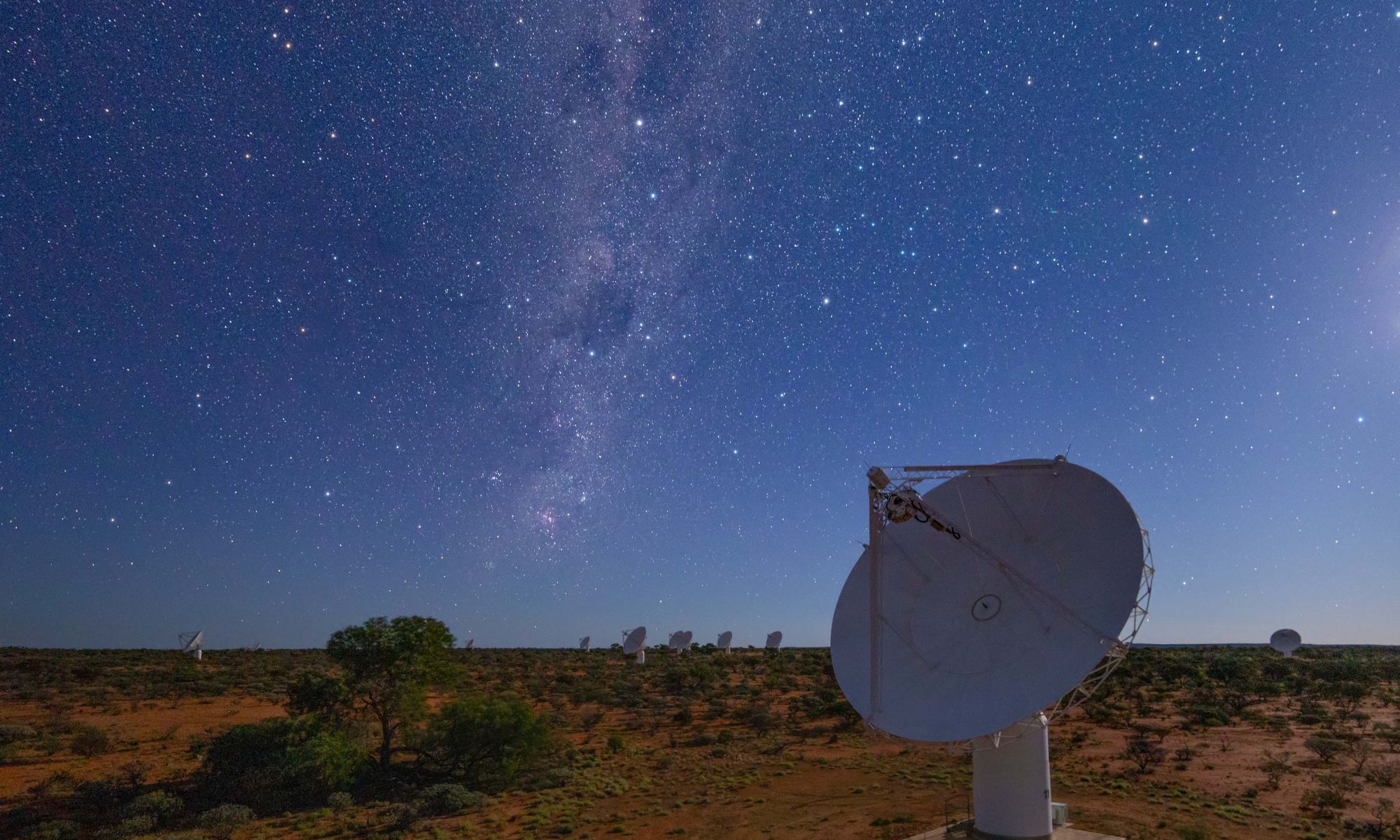Although radio astronomy has been around since the 1930s, it is only in recent years that astronomers have been able to make high-resolution maps of the radio sky. Sky maps are difficult for radio telescopes because radio antennas need to be focused on an extremely small patch of sky to capture images in high resolution. But with modern antennas and computer processing, we can now scan the sky quickly enough to map the heavens in a reasonable amount of time.
Continue reading “Australian Radio Telescopes Just Completed a map of the Universe”This is the Milky Way’s Magnetic Field
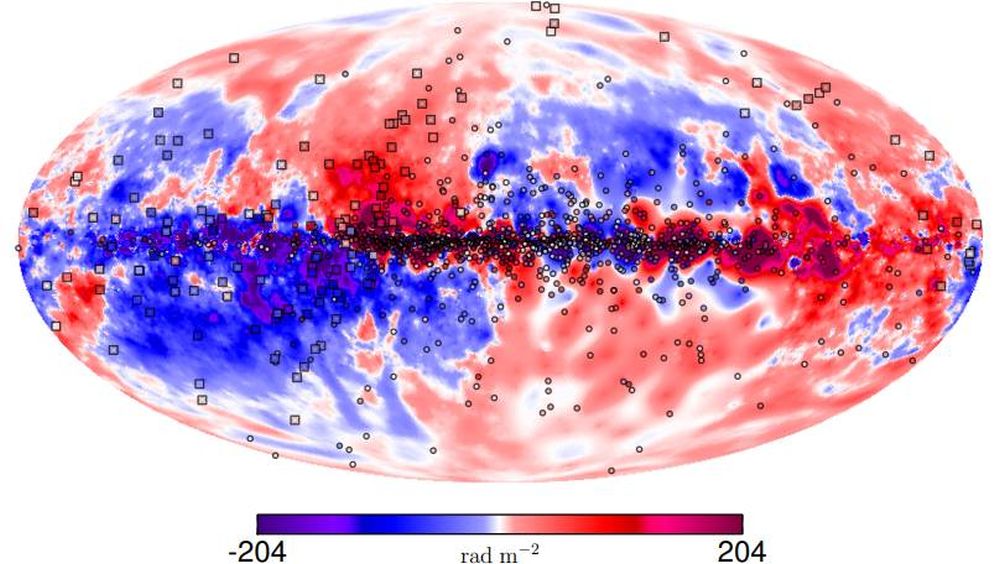
The Milky Way galaxy has its own magnetic field. It’s extremely weak compared to Earth’s; thousands of times weaker, in fact. But astronomers want to know more about it because of what it can tell us about star formation, cosmic rays, and a host of other astrophysical processes.
Continue reading “This is the Milky Way’s Magnetic Field”Supermassive Black Holes In Distant Galaxies Are Mysteriously Aligned
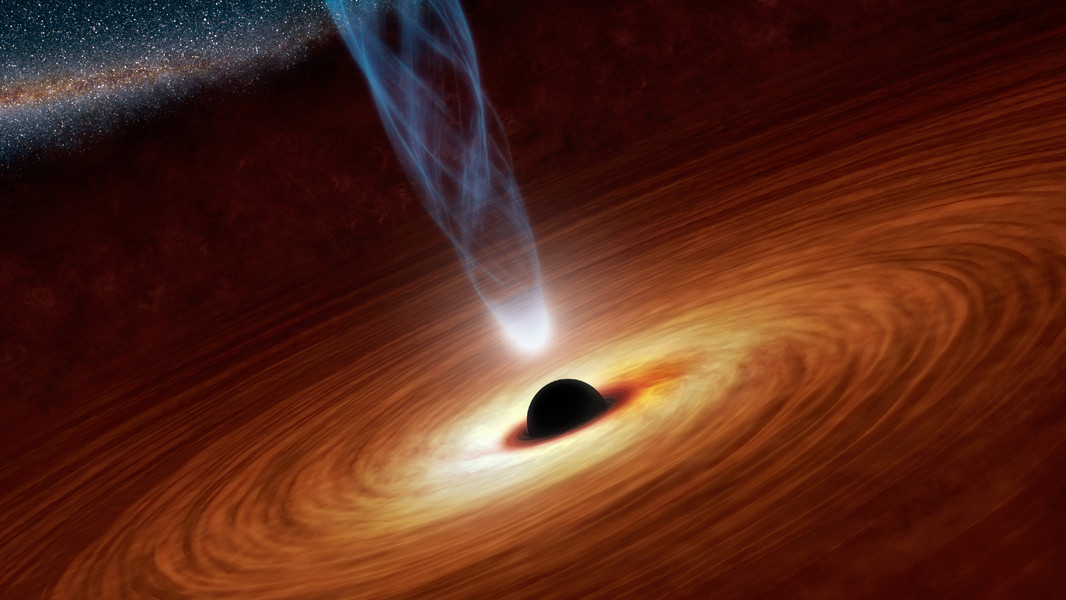
In 1974, astronomers detected a massive source of radio wave emissions coming from the center of our galaxy. Within a few decades time, it was concluded that the radio wave source corresponded to a particularly large, spinning black hole. Known as Sagittarius A, this particular black hole is so large that only the designation “supermassive” would do. Since its discovery, astronomers have come to conclude that supermassive black holes (SMBHs) lie at the center of almost all of the known massive galaxies.
But thanks to a recent radio imaging by a team of researchers from the University of Cape Town and University of the Western Cape, in South Africa, it has been further determined that in a region of the distant universe, the SMBHs are all spinning out radio jets in the same direction. This finding, which shows an alignment of the jets of galaxies over a large volume of space, is the first of its kind, and could tell us much about the early Universe.
Continue reading “Supermassive Black Holes In Distant Galaxies Are Mysteriously Aligned”
Astronomers Spy Early Galaxies Caught In A Cosmic Spiderweb

Once upon a time, when the Universe was just about three billion years old, galaxies started to form. Now astronomers using a CSIRO radio telescope have captured evidence of the raw materials these galaxies used to fashion their first stars… cold molecular hydrogen gas, H2. Even though we can’t see it directly, we know it is there by using another gas that reveals its presence – carbon monoxide (CO) – a radio wave emitter.
The telescope is CSIRO’s Australia Telescope Compact Array telescope near Narrabri, NSW. “It one of very few telescopes in the world that can do such difficult work, because it is both extremely sensitive and can receive radio waves of the right wavelengths,” says CSIRO astronomer Professor Ron Ekers.
One of the studies of these “raw” galaxies was performed by astronomer Dr. Bjorn Emonts of CSIRO Astronomy and Space Science. He and fellow researchers employed the Compact Array to observe and record a gigantic and distant amalgamation of “star forming clumps or proto-galaxies” which are congealing together to create a single massive galaxy. This framework is known as the “Spiderweb” and is theorized to be at least ten thousand million light years distant. The Compact Array radio telescope is capable of picking up the signature of star formation, giving astronomers vital clues about how early galaxies began star formation.
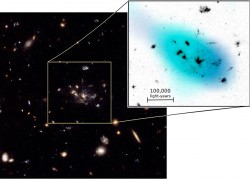
In another research project headed by Dr. Manuel Aravena of the European Southern Observatory, the scientists measured the CO – the indicator of H2 – in two very distant galaxies. The signal of the faint radio waves was amped up by the gravitational fields of the additional galaxies – the “line of sight” members – which created gravitational lensing. Says Dr. Aravena, “This acts like a magnifying lens and allows us to see even more distant objects than the Spiderweb.”
Dr. Aravena’s team went to work measuring the amount of H2 in both of their study galaxies. One of these, SPT-S 053816-5030.8, produced enough radio emissions to allow them to infer how quickly it was forming stars – “an estimate independent of the other ways astronomers measure this rate.”
The Compact Array was tuned in. Thanks to an upgrade which increased its bandwidth – the amount of the radio spectrum which can be observed at any particular time – it is now sixteen times stronger and capable of reaching a range from 256 MHz to 4 GHz. That makes it a very sensitive ear!
“The Compact Array complements the new ALMA telescope in Chile, which looks for the higher-frequency transitions of CO,” says Ron Ekers.
Original Story Source: CSIRO News Release
Stacking Galactic Signals Reveals A Clearer Universe
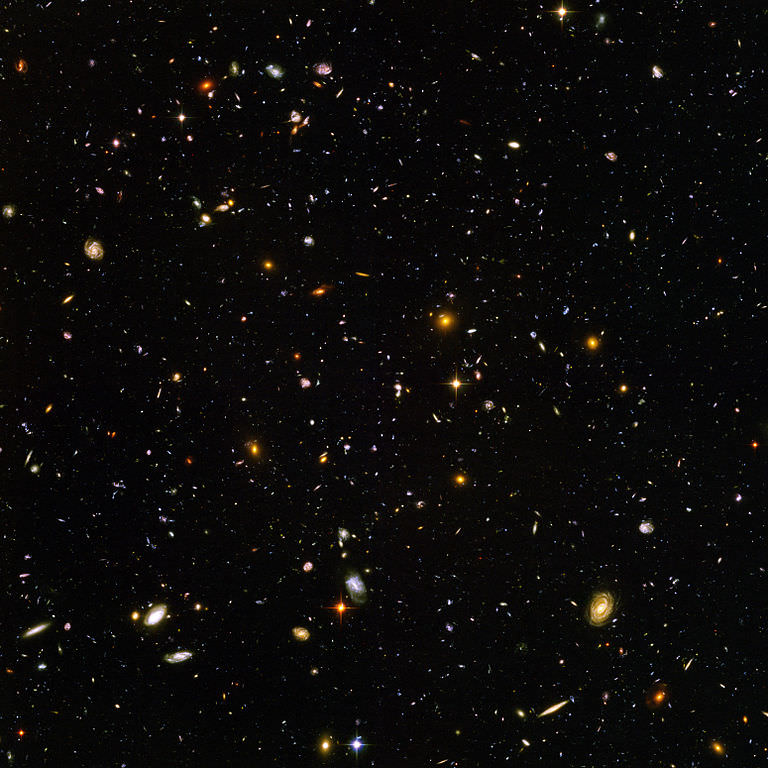
Very similar to stacking astronomy images to achieve a better picture, researchers from the International Centre for Radio Astronomy Research (ICRAR) are employing new methods which will give us a clearer look at the history of the Universe. Through data taken with the next generation of radio telescopes like the Square Kilometer Array (SKA), scientists like Jacinta Delhaize can “stack” galactic signals en masse to study one of their most important properties… how much hydrogen gas is present.
Probing the cosmos with a telescope is virtually using a time machine. Astronomers are able to look back at the Universe as it appeared billions of years ago. By comparing the present with the past, they are able to chart its history. We can see how things have changed over the ages and speculate about the origin and future of the vastness of space and all its many wonders.
“Distant, younger, galaxies look very different to nearby galaxies, which means that they’ve changed, or evolved, over time,” said Delhaize. “The challenge is to try and figure out what physical properties within the galaxy have changed, and how and why this has happened.”
According to Delhaize a vital clue to solving the riddle lay in hydrogen gas. By understanding how much of it that galaxies contained will help us map their history.
“Hydrogen is the building block of the Universe, it’s what stars form from and what keeps a galaxy ‘alive’,” said Delhaize.
“Galaxies in the past formed stars at a much faster rate than galaxies now. We think that past galaxies had more hydrogen, and that might be why their star formation rate is higher.”
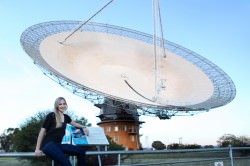
“What we are trying to achieve with stacking is sort of like detecting a faint whisper in a room full of people shouting,” said Delhaize. “When you combine together thousands of whispers, you get a shout that you can hear above a noisy room, just like combining the radio light from thousands of galaxies to detect them above the background.”
However, it wasn’t a slow process. The researchers engaged CSIRO’s Parkes Radio Telescope for 87 hours and surveyed a large region of galactic landscape. Their work collected signals from hydrogen over a vast amount of space and stretched back over two billion years in time.
“The Parkes telescope views a big section of the sky at once, so it was quick to survey the large field we chose for our study,” said ICRAR Deputy Director and Jacinta’s supervisor, Professor Lister Staveley-Smith.
Stacking up a clearer picture of the Universe from ICRAR on Vimeo.
As Delhaize explains, observing such a massive volume of space means more accurate calculations of the average amount of hydrogen gas present in particular galaxies at a certain distance from Earth. These readings correspond to a given period in the history of the Universe. With this data, simulations can be created to depict the Universe’s evolution and give us a better understanding of how galaxies formed and evolved with time. What’s even more spectacular is that next generation telescopes like the international Square Kilometre Array (SKA) and CSIRO’s Australian SKA Pathfinder (ASKAP) will be able to observe even larger volumes of the Universe with higher resolution.
“That makes them fast, accurate and perfect for studying the distant Universe. We can use the stacking technique to get every last piece of valuable information out of their observations,” said Delhaize. “Bring on ASKAP and the SKA!”.
Original Story Source: International Centre for Radio Astronomy Research.

